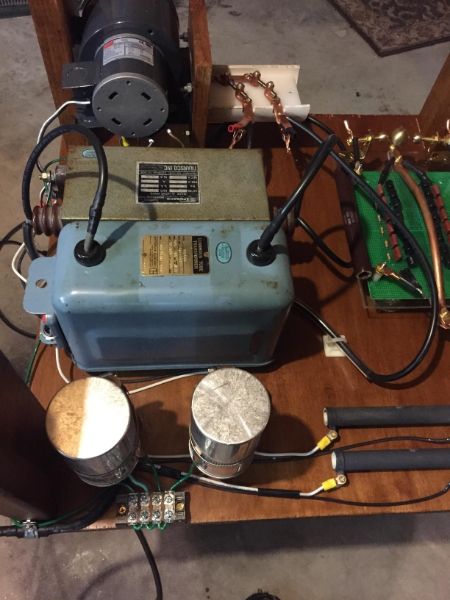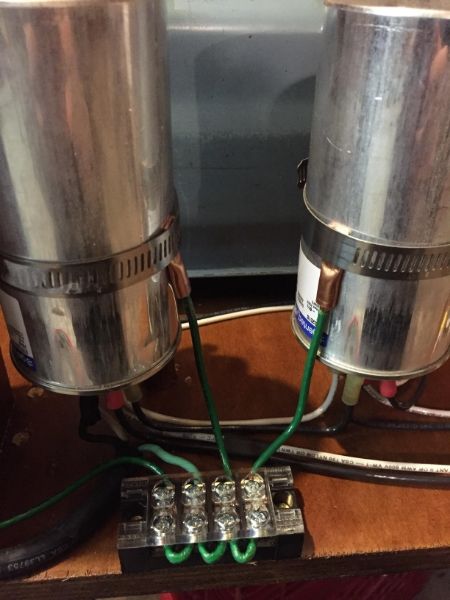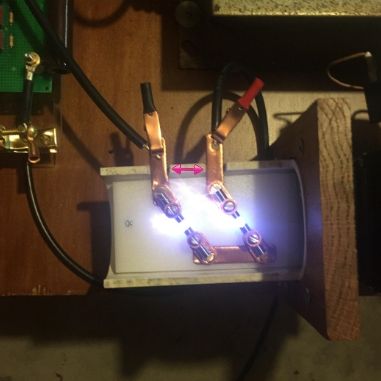Oy vey, debugging a plasma speaker sounds tedious. What do you have for an O-scope?
Just an old Goldstar OS-7040 40MHz Analog CRO w/ wideband Current Probe, 2kV HV probe, and 2x standard probes. It's 2ch, and I don't have a differential probe so it makes it a headache to take differential measurements since I have to use both channels to do so.
This plasma speaker isn't so bad, I'm mostly seeing the inherent flaws of the 4046PLL's phase comparators. There's good reason why all the innovators have stopped using this chip. Tons of documentation on it on 4HV. The short of it is that when used in TCs these PLL chips have a bad habit of blindly running back and force across the entire VCO range when the PhComp can't get a lock on the signal. The larger issue is that there is no formula for the VCO frequency of a 4046 PLL. All anyone has to work from is an old low res blurry graph of frequency, voltage, R, and C values for the timing network that have to be interpolated across to get any semblance of useable approximate data. Basically the only issues with Fiddy's design is one capacitor and one resistor are not the right value for a PLL lock. I've changed the cap and gotten stable operation, but I need to change the ratio and amplitude of the two resistors in the timing network to adjust the lock range within the VCO range so that more of the adjustment range on the pot is useful, and so that the pot isn't so twitchy. It's a long process of trying out various values of R and C while monitoring frequency response of the system.
I may make a video of it running first showing the frequency response. As it is right now with just the adjusted C, you can clearly see both Upper Pole and Lower Pole operation, as well as first and second harmonic drive operation.
If I had to nail down a single issue with it right now that is of priority it would be that the PLL lock maintenance range is lower than the PLL lock acquisition range, and both are lower than the bandwidth of the resonator's two poles. So once locked and in tune environmental changes will detune out of the maintenance range and then the PLL loses lock. Then the PLL tries to get lock back by swinging wildly across the VCO range and locks on to a harmonic instead of a fundamental. It's a simple and well documented problem, really. The user end fix is to re-tweak the phase adjustment and tuning pot. The designer fix is to adjust the RC network until more lock durability is achieved.
When you look at the whole picture you're left with two conclusions for improvements; go with a feedback-less VCO based system for Hi-Fi Audio Modulation ("Plasma Speakers") like I have with my own coils, or go the high tech route of an entirely digital PLL like the "masters" (Conner, Ward, Goodchild, Burnett etc) have.







